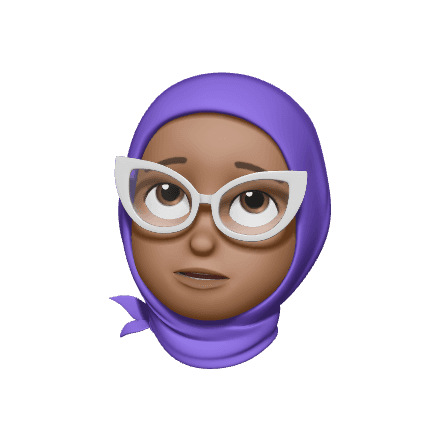Sleephelper

Sleephelper
Helping create positive sleep habits.
[Problem Statement]
Struggling to get quality sleep due to factors like environment, lifestyle, and underlying medical conditions is stressful and can impact physical and mental health and overall well being.
[Project Overview]
As a Psychology undergrad, one of the things that has always resonated with me is the importance of sleep on quality of life. Likewise as a Masters student, I experienced firsthand the effects of bad sleep habits and heard of many similar cases from friends and family. Armed with this knowledge I was motivated to start looking into the importance of sleep and the factors that can affect sleep quality.
[Industry]
Health
[My Role]
UX/UI Designer and Researcher
[Platforms]
Mobile
[Timeline]
May 2022 - Sept 2022
[Step 1: Addressing the issue]
After analyzing and gathering conclusions from my research and interviews I decided I wanted to help people like myself that struggle with breaking negative sleep patterns by creating a platform that helps users create and maintain positive sleep habits, leading to higher quality sleep, increased energy, and improved overall well-being.
This goal is based on the following research findings:
Sleep is essential for good health and well-being.
Many people struggle to get enough quality sleep.
There are many factors that can affect sleep quality, including environmental factors, lifestyle factors, and underlying medical conditions.
There are a number of things that can be done to improve sleep quality, including creating a sleep-conducive environment, establishing a regular sleep schedule, and avoiding caffeine and alcohol before bed.
Smartphone apps can be a valuable tool for people who are looking to improve their sleep quality.
[Step 2: Researching the problem]
[01] User Research
I started by conducting general research on sleep and sleep habits, and doing a series of interviews with individuals struggling to start and maintain healthy sleep habits, with many of them possibly already trying to implement different healthy sleep practices in their daily routine.
I conducted semi-structured interviews with a help of a guide, which consists of 3 parts:
General questions about health and sleep
Participants sleep health and concerns.
Discussing the pains and gains of various sleep health apps available.
For the purpose of reaching the target audience, six individuals were selected with the help of a google screener.

[02] Analysis
The method of data analysis used was interpretive qualitative methodology, in which the analysis of the interview transcripts was carried out, taking place in 3 stages according to the classification of Miles and Haberman:
Data reduction: Concise presentation of the material, coding of primary data, and selection of key topics.
Data presentation: Concise and coherent set of data that enables further conclusions from the study.
Conclusions and verifications: Giving meaning to the processes and phenomena under investigation.





From this analysis the average sleep habits, reasons for poor sleep, techniques for improving sleep habits, various popular sleep apps and their benefits and drawbacks were discovered.
[Step 3: Problem Overview]
The finding that many people struggle to get enough quality sleep has various causes and impacts.
[03.1] Findings - Causes
Environmental factors: These include the noise level in the bedroom, the temperature of the bedroom, and the amount of light in the bedroom etc.
Lifestyle factors: These include caffeine intake, alcohol intake, and exercise habits etc.
Underlying medical conditions: These include sleep apnea, restless leg syndrome, anxiety and depression etc.
[03.2] Findings - Impact
Physical health: Lack of sleep can lead to obesity, diabetes, heart disease, and stroke etc.
Mental health: Lack of sleep can lead to anxiety, depression, and cognitive impairment etc.
Overall well-being: Lack of sleep can lead to fatigue, irritability, and difficulty concentrating etc
[Step 4: Addressing the Target User]
The data gathered allowed me to assess the pain points and needs of the target user and create a persona and affinity map based on these findings.
[Persona]

Sara Smith
Software Engineer
"I'm tired of being tired"
Age: 25
Location: New York City
Tech Proficiency: High
Gender: Female
[Goal]
Get a good nights sleep
Improve her energy and productivity levels
Manage stress
[Frustrations]
Has trouble falling and staying asleep
Doesn't know how to improve her sleep habits
Has a high stress career
[Affinity Map]

[Step 4: The Solution ]
After further assessing the needs and pains of individuals struggling with developing and maintaining healthy sleep habits, I found the solution in a platform that provides a health community, access to sleep experts and resources and a personalized schedule to help users improve their sleep quality
Sleephelper
Health Community: The platform will provide personalized community chats and recommendations based on users' individual sleep data.
Access to sleep experts: Users will have access to sleep experts who can provide resources and information about the latest scientific research on sleep. These experts can also help users with advice and feedback to create lasting sleep habits.
Personalized schedule: The app will provide a personalized schedule with sleep and wake up recommendations based on users' analyzed sleep data. This schedule will help users create and maintain a consistent sleep schedule.
[Step 5: Prototype]
With the user pain points and solution in mind I created high-fidelity explorations while keeping the visuals consistent with the brand identity.

[Key Learnings]
Fully understand the context and priorities before designing.
When I jumped straight into designing without understanding the context of the problem, I quickly found that my assumptions often didn't align with my findings afterwards. Understanding the priorities and goals of my target users made it much easier to design and enhanced my confidence as a designer.
Challenge your design decisions.
After getting feedback for my first design iteration, I realized that there were elements in my designs that were overcomplicated and unnecessary. As I'm brainstorming, I learned to ask myself "Why is this feature necessary?" so that I can have a clearer focus as I'm designing.
[Case 03]